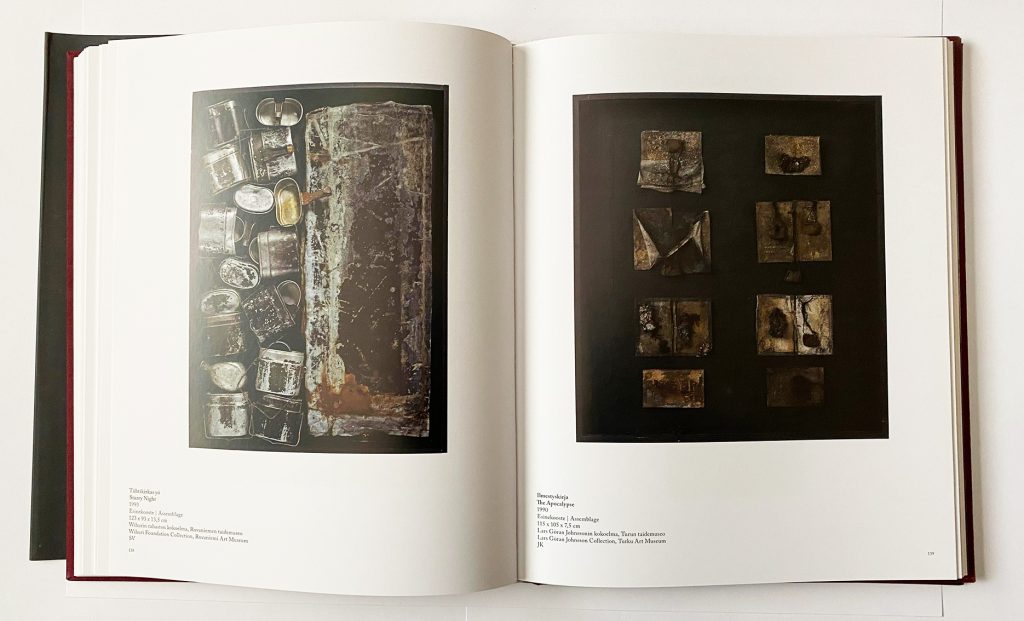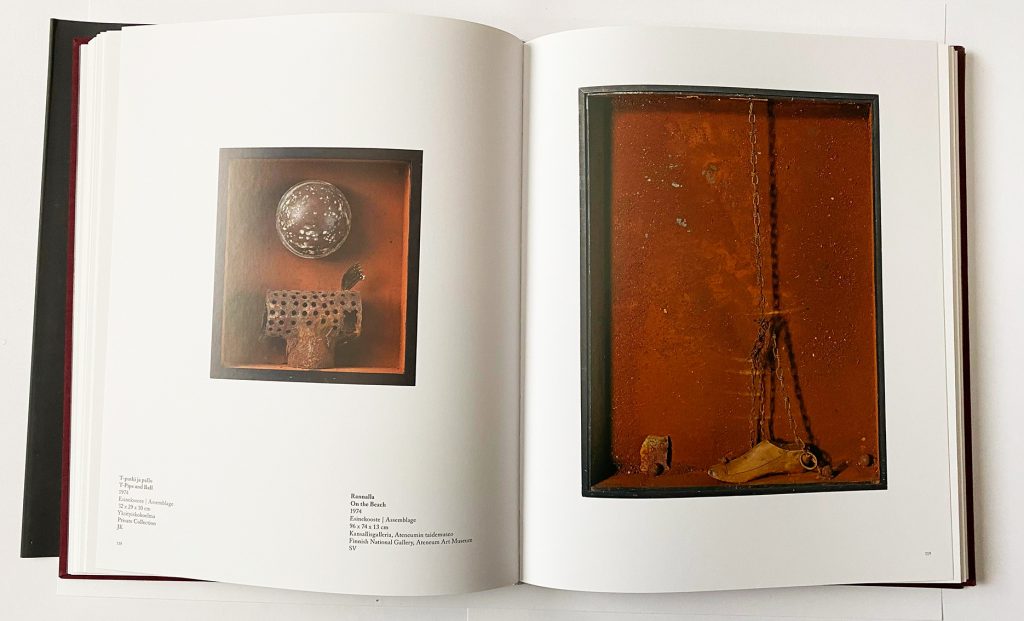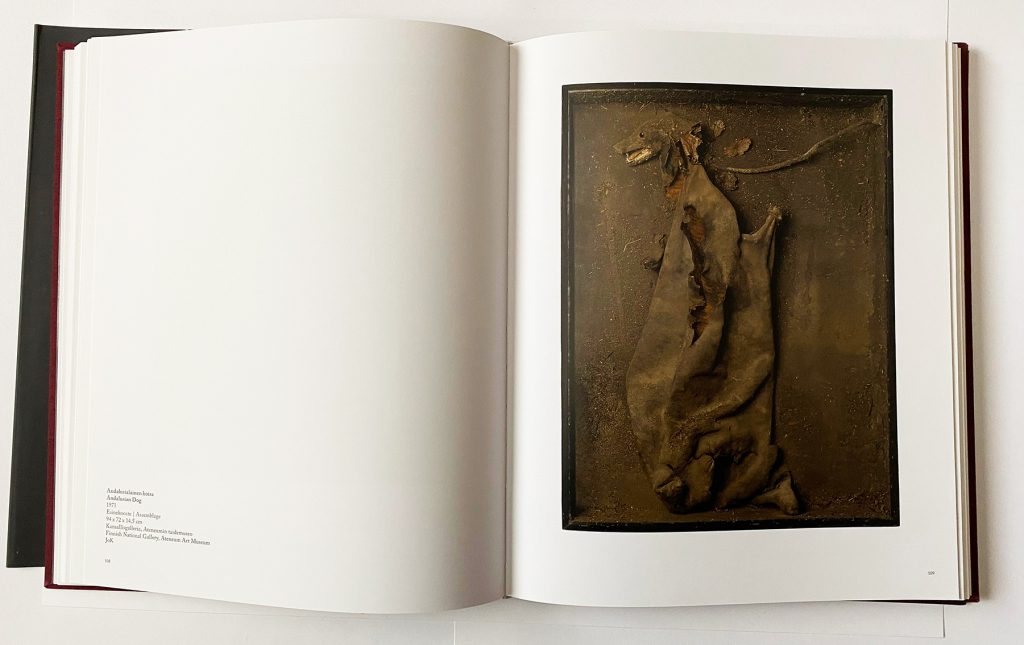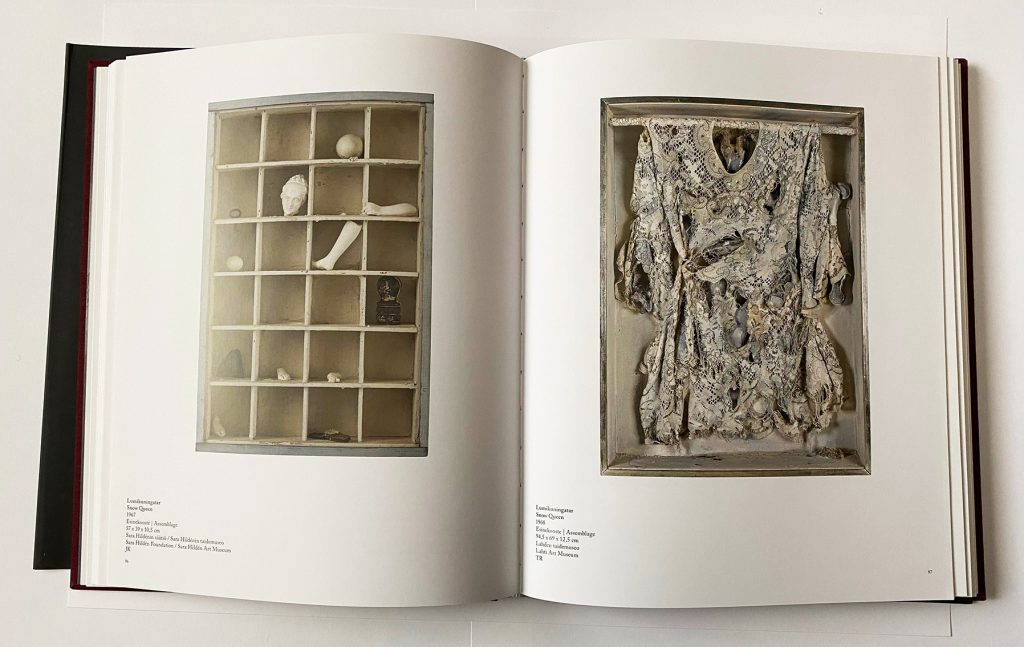
Text: Mikko A.
4/2023
Definition of assemblage is ”an artistic form or medium usually created on a defined substrate that consists of three-dimensional elements projecting out of or from the substrate. It is similar to collage, a two-dimensional medium. It is part of the visual arts and it typically uses found objects, but is not limited to these materials.”
Many times when talking about noise collage, as method of sound crafting, it does make me think is the sound really two dimensional? Even from pair of stereo speakers, the sound sort of appears in three dimensional space. Would noise assemblage describe more precisely what is being done? What are the dimensions found from sound, that may distinctively separate it from somewhat flat two dimensional image? Even if noise assemblage would sound as happening in dimension, in moment we hear it, it tends to be fairly abstract stereo recording and not physical object itself.
For long time, before knowing object assemblage exists as artform, I had interests in obscure objects. For example knowing the idea of cabinet of curiosities. Understanding the role of valuable items in glass frame. Earliest pictorial record of such object collection is 500 years old. Already in c. 1600’s idea of kunstkammer existed. 17th century onwards, 18th century and after that cabinets of curiosities came to signify collections of art. Also objects of curiosities in general. As a kid, I also had box of all sorts of weird things. Torn pages of pornographic magazine found from streets, human teeth, weird objects that had no use, but some level of fascination. etc. I remember also hiding ”object boxes” in forests, just including random items in them. Nails, screws, matches, whatever. Actual reasons for stashing such boxes, can not remember anymore. It wasn’t consciously for purpose art. Certainly not. However, it tells something about perception of person, who keeps their eyes open and recognize things everybody else passes by without reaction. Almost obsessive way of wanting to look what is that, you see in corner of your eye. Piece of paper misplaced in forest. Object found in place where it does not belong. Object assemblage left behind, it certainly does have often audience of some sort.
Who are these people who look elsewhere? It is hard to say. One of decades old IOPS (Institute of Paraphilia Studies) project was object misplacement. It constituted things like crawling into difficult places, where nobody in their right mind would go. Leave things like dildos, vibrators or pornographic objects there. Later on return to site, only to discover that someone indeed has found it, and taken it. No longer there. Who? Why? Those questions may have been in mind of the person who found object, but equally huge mystery for the artist responsible of the… should you call it installation? Private performance? Whatever it is, some sort of incident of mysteries of power electronics drilling into physical world.
The original cabinet of curiosities included emphasis on exactly that: Curiosities and wondrous specimens. Something out of ordinary, what was puzzling enough to collect and cherish. Later on, European natural philosophers started to lose their interests in that aspect. ”Enlightenment thinkers placed growing emphasis on patterns and systems within nature, anomalies and rarities came to be regarded as potentially misleading objects of study. Curiosities, previously interpreted as divine messages and expressions of nature’s variety, were increasingly seen as vulgar exceptions to nature’s overall uniformity”. Very much the development I would see within noise and power electronics. Its passion to display and cherish anomalies and rarities as things of interests, and eventually turning people to consider them as vulgar and useless. And therefore people largely appreciating something more common? Perhaps things as expressions of personally recognizable human emotions?
There is some unexplained lure in found curiosities. Some years ago I was driving in car in Tampere region, with no exact plans what all places to visit. I noticed thrilling image in advertisement of art museum and instantly drove into Sara Hildén museum where large Juhani Harri exhibition was taking place. It is generally very hard to keep up what is happening in museums, so catching this one was purely accident. When seeing his works, it takes only fraction of second to realize this is something I really want to see.
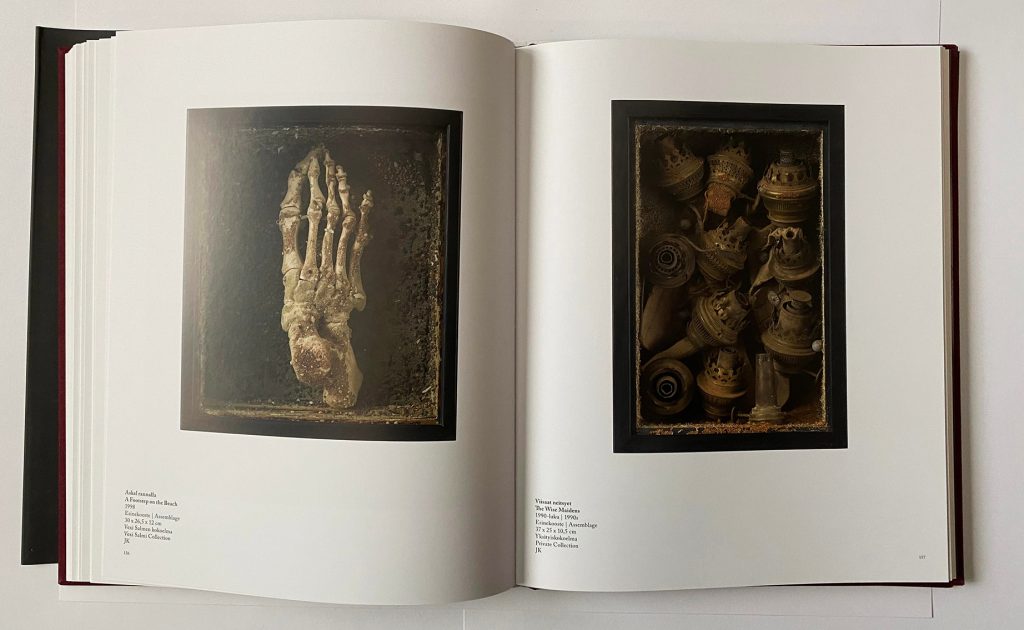
Juhani Harri (1939–2003) was a pioneer of assemblage art in Finland. His central aim was to portray time and its evanescent nature. You do not need to know anything about art history to appreciate it. His works could touch noise heads who have seen collages in noise record covers. Or held special packaging in their hands. Some of the MSBR 7” lathe cut releases appear as if they could be assemblages placed in art museum, right next to works of Juhani Harri. He worked in Finland as pioneer of the style and some of the references to other assemblage artists is done later on. He often did not copy or imitate what others were doing, but people ended up with similar things accidentally.
”Juhani Harri’s first assemblage works was Diary of a Priest from 1963. An emotional affinity can be felt between Harri’s works and the American object artist Joseph Cornell as well as the French-born Arman. Harri also found inspiration in the miniature ships in bottles and cases, which are typical of the Ostrobothnia region in Finland. They helped Harri understand that an object can be meaningful in itself, and not only as an image. He found the objects he used for his compositions at random. Juhani Harri did not seek, he found.”
This is something I feel connects his approach with noise. Not all noise, but some of it. There is difference of seeking, and finding.
Sometimes things emerge out of finding object that speaks to you. Not consciously searching your way to the material. You have passed by countless of objects and situations and none speaks to you. None of metal junk seem interesting, none of machines appear to create noise you want to hear, but then something does. You didn’t really go search for it, but found it.
Harri’s work consist objects that he found, and knew they will be used in something. He didn’t go actively looking more objects for the assemblage. He waited and waited until things naturally clicked, so to say. Like noise maker, who has archive of sounds. Objects that are used for noise making. Found sounds, field recordings, but he does not ”play” them like instruments. There is vast difference of having scrap metal you play, like instrument. Shakebox glued to contact mic – that is an instrument. Sheet of metal with bunch of efx you tweak, is instrument. It is opposed to finding object that has distinctive sound. You are not playing instrument, but sound comes from an object. Found object or found field recording that has specific quality of sound. This specific quality is what speaks to you. Perhaps when it is placed into work and the assemblage has its own character. Harri’s emphasis on passing time, means most often patina. Decay and fragility. Something discarded and broken. This quality of creaking and screeching rust and corrosion can be found in some of the very best noise.
We can take example of THE NEW BLOCKADERS Changez Les Blockeurs LP. Artists are not playing instruments in conventional way. It is not sound collage either. They operate in some sort of three dimensional assemblage, that includes objects – that are sound. Without doubt, TNB plays those objects. If playing is too far fetched word to describe the scratching and creaking metal object noises, we could think simply placement of noise objects.
Each object that is being visible – or audible – has a meaning. The detail and placement of sound in Changez Les Blockeurs is vastly beyond just ”smashing things”. It is way beyond just creating utmost noisy chaos. The sound has been found and selected due very specific qualities the objects have. That I am certain. Combination of couple found objects and their sound does not seem it would be randomly done. There is absolutely insight and taste. Any relevant noise maker knows this does matter. They know the difference of object (physical or sonic) or more precisely recognize the different of object. They know IT, when they find it.
Many times in current art, you got kind ready mades or object placement that carries political or social message. You got some fool throw hundreds of life jackets into gallery and put sign describing lost lives in the mediterranean sea. Or you got the depressed fragile young artists make pile of the used packages of depression medication. Works that are aesthetically so lame and useless, and the message itself in depth of one tweet.
Juhani Harri did also socially conscious works. His assemblages are usually not, or at least they do not have obvious ”message” pasted on then. They work as objects with their own soul, rather than objects that would have instrumental purpose in agitating idea. His works operate in time. Most of these objects are fragile and decaying. The most dominating element is some sort of decay. Rust, dust… some sort of patina. Oxidation, bronzing. Indeed fitting my own perception of best noise. Noise ,not as a technologically advanced instrumental procedure’s, but artists finding something from decay and waste. Most often remains of industrial production.
Listening THE NEW BLOCKADERS Changez Les Blockeurs LP, you will recognize zero technology. You can’t find instruments, synthesizers, technological effects and so on. You will hear person who found the object that makes this odd noisy broken sound that pretty much nobody else thought would be useful. At least object was not made for it. Not like synthesizer made for purpose of creating odd sounds. Or effect pedal that was designed to alter sound in very precise parameters both maker and user knows.
Like the simple minded common folks would never ”get” why someone has cabinet filled with weird objects, it remains almost unsolved mystery how come some people like to hear obscure sound object? Why would we be drawn towards anomalies, rarities…? Entire culture tells us that we need to approve this kind of traditional acoustically designed wooden box, with metallic wires attached to it, that are tuned into certain harmony and can play things someone composed for it. It has a name, and acknowledged ways to make sounds of it… yet we choose to look elsewhere. That we choose to use object that is not designed to make music, yet it often constitutes same physical material as instruments too, create resonance and sounds. Just like Juhani Harri who would collect his discoveries that caught his attention. Assembling them into somewhat coherent pieces that make sense to only few. But as he has exceptionally good artistic taste, even people who don’t really ”get it”, and do not have urge to make something like that, recognize it as art.
The New Blockaders – Free Uninterrupted Collective Karma 1-2, found from TNB EST MORT! 1982-1994 2xCD on Tesco Organization was maybe the first time I consciously heard The New Blockades. There are compilation tracks that I may have passed by without thinking much, but this double CD was something that I consciously bought and it made impact. First as challenge, as it was so beyond the blasting noise I was used to listen to. It brought the dadaist collage art into noise in way I had not thought before. Sure collages exists as long as noise has been done, but I just didn’t think about it in same way. The full color, advanced and aesthetically appealing works of Rupenus were and still are striking. The sound itself was one of the first times I was introduced noise object. Not theoretically. Probably not by purpose, just something I recognized. Sort of related to Pierre Schaeffers sound object theory. Sonic entity being something itself.
For sure, experienced ear will know or recognize many of sources. At the time, there was so much in TNB est mort! that I could not figure out what the hell it is that makes some of these sounds. It is not just smashing shit up. It is not guitar pedals. It is not attempt to be ”brutal” and loud. There are no instruments nor effects. There are only objects someone recognized as sounds that could, or should be used! Squeaky and weird ones. Some of them you could be able to reproduce. Some remain mystery what exactly they are and how they did do it.
In Juhani Harri’s works, material objects are not passive. There is activity, strength and ability to make connections. Harri said that finding something really touches your heart in a way that you can’t just throw it away. In his art, core is often utensil, that is decayed, rusted, broken, ceased to be what it is. Now trash, yet recognized and becomes object of curiosity. The broken connection to original use makes possible the new perspective. Rejected, useless objects shift into new dimension of unknown: Culturally unknown purpose, unexpectedly glowing and resonating form.
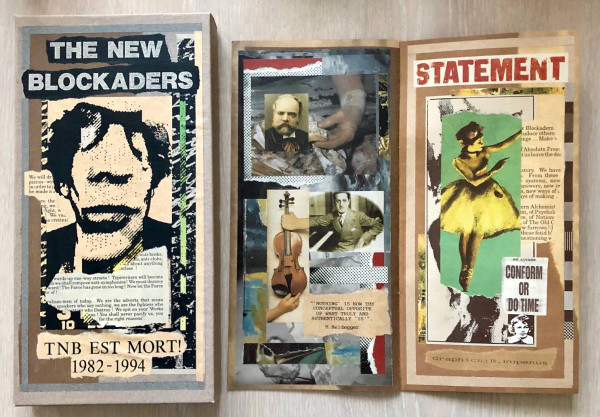
TNB Est mort! double CD is one of the most thrilling object record for me. For long time, I was not entirely sure what to think of it. Almost shocking first experience. Slowly luring to learn something of it. Tolerate the repetition, different assemblages of same source materials over and over again. Like in art of Juhani Harri, you can’t quite put in words what it is expressing, if anything. They are manifestation of anomaly and bizarre. That is for sure.
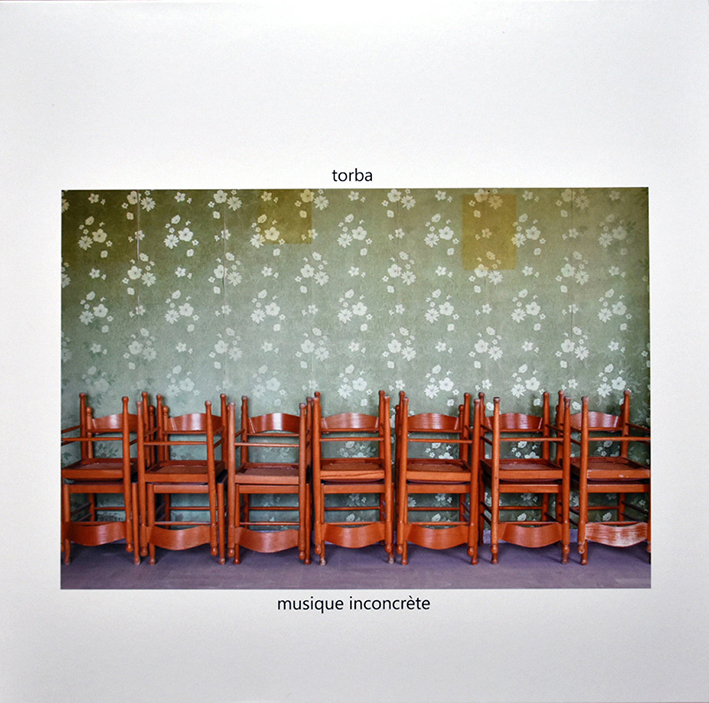
More contemporary assemblage of sound, I finally managed to get the 2019 LP of Torba few weeks ago. Musique Inconcrète published by Fragment Factory. As soon as I was listening to it, I almost could not let it go. Just repeatedly re-playing the LP over and over again. Why exactly? Hard to say. Just like mentioned object collections, many times you see or hear something and it simply clicks. No words describe why exactly you have the absolute urge of preserving, collecting, hearing, some particular object. But this is it.
This was one of albums I was meant to get for few years, I finally when Finnish distributor Kaos Kontrol is shutting down its mailorder I took it from there. I had not read any descriptions or reviews. Torba ”musique inconcrète” LP hit my turntable without any clear expectations. I had difficulties to let it go, even after multiple spins. After days of returning to LP, I felt I just need to move on as new releases keep piling up. What exactly makes me so thrilled of this LP, is almost unexplained quality. Writing this text is one of the attempt to understand why exactly Torba appeals to me.
https://torba.bandcamp.com/album/musique-inconcr-te
Label describes the concept behind the album in length. When I finally read it, after having listened album countless time, it suddenly gave it even more context.
”Concept behind album revolves around the idea of sketch or annotation. Or better still: The inconcrète. A semi-false (or semi-correct) french word, used to undermine the consistency of the french Musique Concrète tradition in a rather light-hearted manner. During the conception of this album, MD was strongly influenced by the work »Incompiuto – The Birth of a Style« by the Italian contemporary art collective Alterazioni Video. They loudly claim that Incompiuto – the unfinished – is the only Italian art style of some significance in the past 50 years: “The term ‘incompiuto’ refers to the architectural and infrastructural works whose construction has been halted, and which can be witnessed throughout the entire Italian peninsula. They are all publicly funded, and for a variety of reasons (design errors, political decisions, inaccurate cost estimates, contractors’ bankruptcies, evident disregard of building regulations, the disappearance of funds, etc.) their construction has been interrupted, leaving behind a series of ruins in reverse.” (Alterazioni Video)
Far from any reference to post-architecture or mafia-political controversy, the final output of »Musique Inconcrète« is a macro cut-up of sound-screens reorganized as quasi-organic narration: Fragments of unfinished compositions, roughly assembled according to a mere aesthetic criteria. Beyond the sporadic use of oscillators and a few inserts of other people’s music manipulated on ¼-inch tape, the whole LP is made out of field recordings collected in the region of Salento in southern Italy, where Diciocia is currently living. All environmental sounds were captured with common consumer electronics (walkman and mobile phones) in order to give back the domestic feeling of an abandoned opera. Speaking of geography, the first track Lapjèdr Fòr is the only exception. Intended as an introduction to the whole narration, it testifies MD’s emotional and non-linear journey back from Germany, where he spent about eight years, to Southern Italy: It contains a clashing mix of recordings made in Berlin and around the seaside of Torre Lapillo.”
This album certainly is like manifestation of found sound. It is debatable wether Torba, a.k.a. Mauro Diciocia, went to look for them. Probably did. As opposed to playing sounds, it clearly seems as found sound. Found sound objects. It is curious difference, where Juhani Harri’s object assemblages constitute of objects that have passed the time, become decayed and old and therefore changed their meaning. In case of Torba, the objects were never complete in first place! Incompiuto – the unfinished, that building or infrastructure that decays there half way done, is different entity than something that had served its time.
How we can hear this concept in the LP? Exactly from reference in form of pure expression: Unfinished art. Some may file it as excuse. Why not tweak it until it is really finished? Complete and perfect? Perhaps as unfinished object has its own character just like those unfinished buildings. In its imperfection that lures to look or listen again. Repeatedly. It is never finished. Never complete. That is probably the best character of it. I have talked to a lot of noise listeners who curse the too perfect noise albums. Contemporary possibilities of mixing, editing, cleaning up. Possibilities of re-doing a mix. In old days, tweaking mixer button in a bit weird way, and you live with it, since re-doing everything and manually getting it all perfect is quite another thing than working on editing screen.
Many recordings, that are too perfect, you end up listening once. That’s that. They give you all what is there to give. It is not bad. Noise listened once, may be perfectly enough. Not everything need to be returned, and they still carry value. Difference may be, the unfinished recording gives you idea. It give you more than recording factually delivers. It is like something is taking place, something is born. Perhaps almost divine moment, where it is yet to be polished. It simply emerges and as a listener you get to hear it before the dirt is removed, lights are adjusted, room is sanitized. The unfinished nature of many noise tapes, that have this relaxed feeling of not being done for ”masses” of album buying audience, not packaged in music industry standard format, but something else – that clearly appeals to many who listen noise.
This idea, the collection of curiosities leaves many open questions you feel tempted to return. Nothing is answered, nothing is fulfilled. Lots of work for imagination remains.
Material:
Juhani Harri -Book, 2019
Published in connection with Juhani Harri’s exhibition (14.9.2019-12.1.202), the book features essays by Silja Rantanen, Elina Räsänen and Timo Heino. Introduction by Museum Director Päivi Loimaala. Biography by Curator Saara Heikinheimo.
Texts in Finnish and English. Richly illustrated. 248 pages.
https://www.sarahildenintaidemuseo.fi/en/artwork/juhani-harri/
Torba Musique Inconcrète LP 2019 by Fragment factory: http://fragmentfactory.com
The New Blockaders Changez Les Blockeurs LP reissued by Urashima 2022. https://urashima.it/uma154/

